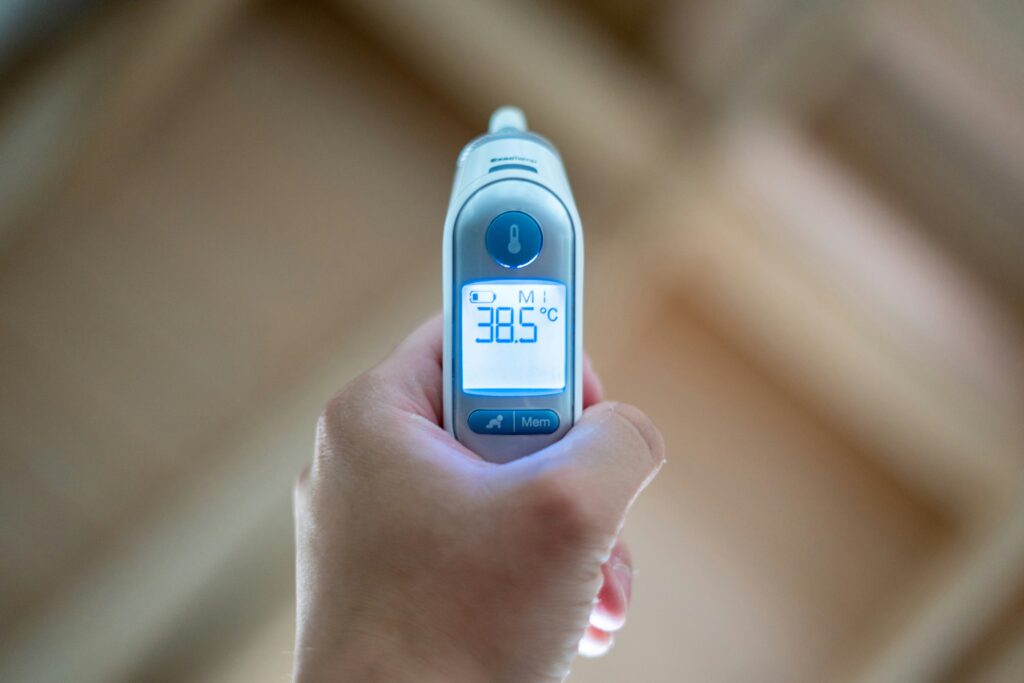Fever in babies is a temperature above the normal range of 98-100F or 36-37C. It is the body’s response to an infection. Fever is not an illness but a sign that the body system is responding to an infection.
Fever doesn’t make an illness worse; that is, you can’t tell how bad an illness is by the temperature; nevertheless, fever in babies younger than 3 months must be treated as a medical emergency (get the attention of a pediatrician).
Fevers are usually scary and troubling, but be assured that a fever means the child’s immune system is fighting hard. A fever informs the body to make more white blood cells and antibodies to fight infections. An increased temperature may be more potent in fighting the infection by simply raising the body temperature to be less accommodating to the germs and viruses.
To manage a fever in a baby
- Remove layers of clothing so the baby can lose heat
- Keep them hydrated; nurse the baby more often
- Use lukewarm water to wipe the baby’s skin. Particularly the under-arm and forehead
- Stay away from the sun or heat; stay in a cool place
- Use the fan; keep it low enough to circulate air around them rather than a direct blow on them to avoid shivering
- Use fever reducing medicine within the recommended dose only when the fever s making the child uncomfortable and, most importantly, when the doctor gives a go ahead
Note:
Fever in under 3 months old is a medical emergency; call a doctor, even In a case where the under 3 month old is having a temperature lower than 36C/97F. Call a doctor when the fever lasts more than a day or two (applicable for children two years and below) or two to three days (applicable to children three years and above).
Call a doctor when there are other accompanying symptoms such as vomiting, difficulty breathing, seizures, or unconsciousness.

